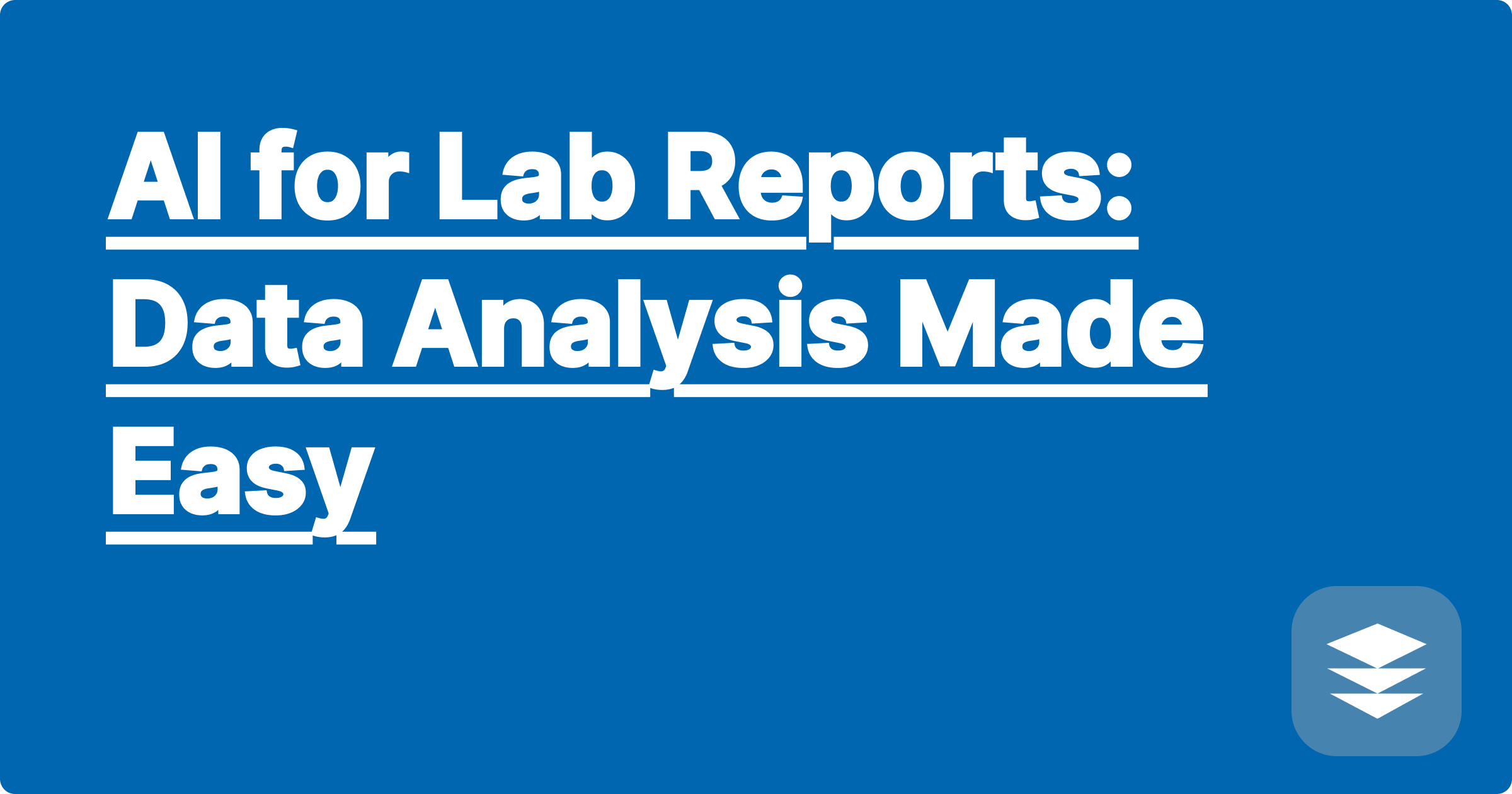
The demanding world of STEM education and research often leaves students overwhelmed by the sheer volume of data they need to analyze and interpret for lab reports. Long hours spent manually processing data, identifying trends, and crafting comprehensive reports can detract from valuable time needed for learning core concepts and conducting further research. This is where the transformative power of Artificial Intelligence (AI) comes into play, offering a suite of tools and techniques to streamline data analysis and make lab report writing significantly more efficient.
For STEM students and researchers, efficient data analysis isn't just about saving time; it's about unlocking deeper understanding. By automating tedious tasks, AI frees up mental bandwidth to focus on the "why" behind the data, fostering critical thinking and enabling more insightful interpretations. This ultimately translates to better grades, more impactful research contributions, and a more fulfilling academic experience. This blog post explores how AI-powered tools can revolutionize your lab report workflow, offering practical strategies and real-world examples to help you achieve academic excellence. We’ll delve into specific AI platforms like GPAI and other readily available tools, demonstrating how they can be seamlessly integrated into your study routine to maximize your learning potential.
Navigating complex datasets and extracting meaningful insights can be a daunting task, especially when dealing with the intricate experiments common in STEM fields. Traditional data analysis methods often involve manual calculations, spreadsheet manipulation, and painstaking graph creation, consuming precious time and increasing the risk of human error. Furthermore, understanding the statistical significance of results and effectively communicating them in a clear and concise manner can be a significant hurdle for many students. This challenge is further compounded by the ever-increasing volume of data generated in modern scientific research, making manual analysis increasingly impractical.
AI offers a powerful arsenal of tools to address these challenges head-on. AI-powered platforms like the hypothetical GPAI, along with existing tools like ChatGPT, Claude, and Wolfram Alpha, can automate many of the tedious aspects of data analysis. ChatGPT and Claude, for example, can assist with natural language processing tasks, such as summarizing research papers, generating descriptive captions for figures, and even drafting sections of your lab report. Wolfram Alpha excels at computational tasks, allowing you to perform complex calculations, statistical analyses, and generate visualizations with ease. GPAI, as a hypothetical integrated platform, takes this a step further by offering personalized learning plans, time management tools, and problem-solving analysis, creating a holistic learning environment.
Imagine you're analyzing data from a physics experiment involving projectile motion. First, input your raw data into a spreadsheet or a dedicated data analysis tool. Then, utilize Wolfram Alpha to perform regression analysis, determine the equation of the trajectory, and calculate relevant parameters like velocity and acceleration. Next, visualize your data by creating graphs and charts, again leveraging Wolfram Alpha or a specialized plotting library. Finally, use ChatGPT or Claude to help you articulate your findings in clear, concise language within your lab report, ensuring your results are effectively communicated. GPAI, in this scenario, could provide a personalized study plan to reinforce the underlying physics concepts, track your progress, and even suggest related research papers to deepen your understanding.
Consider a chemistry experiment where you're determining the rate of a chemical reaction. You can use AI to analyze the change in reactant concentration over time. Inputting your data into Wolfram Alpha allows you to calculate the reaction rate constant using integrated rate laws. For instance, if the reaction follows first-order kinetics, Wolfram Alpha can directly compute the rate constant k from the equation ln([A]t/[A]0) = -kt, where [A]t is the concentration at time t and [A]0 is the initial concentration. Similarly, in biology, AI can be used to analyze DNA sequences, predict protein structures, and even simulate complex biological systems.
Integrating AI tools into your workflow requires a strategic approach. Start by identifying the specific tasks that consume the most time and effort in your lab report process. Then, explore the available AI tools and determine which ones best suit your needs. Don't be afraid to experiment with different platforms and find what works best for you. Remember that AI is a tool to enhance your learning, not replace it. It's crucial to understand the underlying principles behind the data analysis and interpretation. Use AI to expedite the process, but always maintain a critical eye and ensure you understand the significance of the results. GPAI, with its personalized learning plans, can help you reinforce these fundamental concepts while optimizing your study time.
Beyond data analysis, AI can also significantly improve time management. Integrating AI-powered scheduling apps with techniques like the Pomodoro method can create a highly efficient study routine. These apps can analyze your schedule, prioritize tasks, and even suggest optimal break times to maximize productivity and minimize burnout. Furthermore, AI-driven mental wellness apps can provide personalized relaxation techniques and mindfulness exercises to manage academic stress and maintain a healthy work-life balance.
By strategically integrating AI tools into your workflow, you can transform your lab report writing process from a tedious chore into an opportunity for deeper learning and discovery. AI empowers you to focus on the intellectual aspects of your studies, fostering critical thinking and enabling you to achieve greater academic success. Begin by exploring the tools mentioned in this post, experiment with different approaches, and discover the power of AI to unlock your full academic potential. Consider how platforms like GPAI could further enhance your learning journey by providing personalized guidance and support tailored to your individual needs. Embrace the future of learning and embark on a path toward greater efficiency, deeper understanding, and ultimately, academic excellence.
Ace STEM Exams: AI-Powered Prep
AI Note-Taking: Organize Studies
AI Study Buddy: Conquer STEM Exams
AI for Lab Reports: Data Analysis Made Easy
AI Homework Helper: STEM Problem Solver
Ace Your Finals: AI Study Planner
AI for Physics: Problem Solving Made Easy